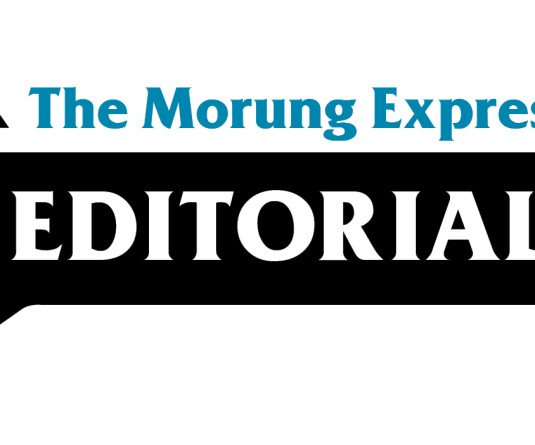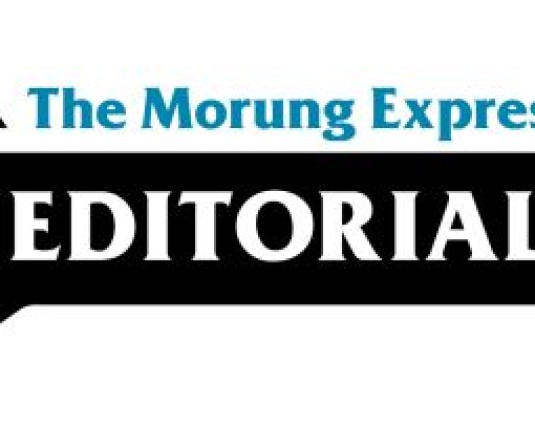
Dr Asangba Tzüdir
A year since the signing of the ‘framework agreement’ between the Government of India and the NSCN (IM), as an epilogue behind the larger ‘interest,’ two ‘tricky’ developments have taken place. It is tricky because of the kind of GoI’s application of their ‘suspect technique’ with the Naga political issue over the years. Firstly, Anthony Shimray, has been ‘conditionally’ granted bail by a special court in Delhi. The district judge Amar Nath gave the relief to the NSCN (IM) leader after NIA did not oppose his bail application saying that his bail was “important in the interest of peace negotiations between NSCN (IM) and the Government of India”(zeenews.india.com). Secondly, Ex- BSF Director General Pathak has been appointed as the new Chairman of the Ceasefire Monitoring Group (CMG) for a period of one year from the date he takes charge and will operate from the state capital Kohima. Readers will be left open for further perusal.
Though the contours are slowly emerging, the interest surrounding the ‘framework agreement’ has been the ‘hidden contents’ of the ‘framework’ of which the General Secretary of NSCN (IM) Mr. Muivah said that the ‘framework agreement’ would have to be kept a secret to “save the course of the talks.” “Time will come [when it will be shared with the public]. It is a secret because until a complete settlement is done, some secrecy will have to be maintained.”(Vijaita Singh, ‘NSCN has not given up on sovereignty, says Muivah.’
The Hindu, 8th July 2016). In an article by Z. Lohe, which appeared in this paper titled, “Why keep concealing the contents of framework?,” the interlocutor Mr. Ravi stated that the contents of the framework were shared and deliberated with the 60 Nagaland legislators on 27th August 2015. He also stated that Mr. Ravi had “collectively invited all the Tribal Hohos” and briefed and deliberated for over four (4) hours on 8th December 2015. As such, he asserts, “How can it be said that the contents are secret?” Here we have Mr. Muivah saying that the contents need to be kept a secret while Mr. Ravi says that the contents are no more a secret. In addition, we have the Government of Nagaland promising to step down in the event of finalization of the ‘agreement’ and the Chief Minister of Nagaland recently adding that “What India can provide to Nagas should be accepted” by the Nagas not knowing exactly the outcome of the offer. What can be conclusively drawn is the melting point that, it is working towards a ‘final settlement’ and that the contents will be disclosed to the public only when the agreement between the GoI and the NSCN (IM) is finalised.
This brings us to the larger question of what is a ‘framework agreement’. Can an ‘agreement’ be made based on a framework? A framework agreement is an agreement between two parties that recognises that the parties have not come to a final agreement on all matters relevant to the relationship between them. (wikipedia.org). So, we have here what is generally known as ‘framework agreement,’ an agreement signed though clearly not finalised. Thus, underlying the ‘framework’ there are ‘principles’ on which negotiations are being made currently, rather than agreed. So, more aptly, the Naga Political journey is ‘working’ on certain ‘principles of negotiation’ based on which a ‘final solution/settlement’ is to be arrived at.
The question of integration and sovereignty lie at the core of the ‘principles of negotiation’ and their status will be based on the outcome of the negotiations. The statement made by Home Minister Kiren Rijiju and also the speech by Rh. Raising in the interactive Meeting at Sungratsu, Mokokchung requires careful scrutiny by reading between the lines. Firstly, the Minister of state for Home Kiren Rijiju triggered the issue in The Hindu last year that the NSCN (IM) had given up its demand for sovereignty and the rebel outfit wants “a solution within the constitution of India.” This was followed by Mr. Muivah saying that, “NSCN (IM) has not given up on sovereignty.” Secondly and most importantly, the speech delivered by Rh. Raising is more loaded. The speech laid the concept of NSCN under fourteen (14) points, one of which is the Peace Process that culminated into the ‘Framework Agreement.’ For purpose of discussion, four bullet points are reproduced.
- The ‘Framework Agreement’ is based on the uniqueness of Naga history and the political position of the Nagas.
- It is founded on the universal principle of democracy that sovereignty lies with the people. And that sovereignty of the Nagas lies with the Naga people and the sovereignty of India lies with the Indian people.
- However, it is mutually agreed that the two people will share sovereign power in some areas.
- It is also agreed that the two people will co-exist as two entities/ equals. (Source: Eastern Mirror, 24.07.16)
A year has passed since the signing and one may be tempted to come to a logical conclusion regarding the reasons for the ‘framework’ in not being finalised. The contours are emerging but the ‘principles of negotiation’ seem to be paradoxically loaded and needs to be deliberated in clearer terms.
The events that unfolded the creation of Nagaland statehood is chiselled in our memory. The ceasefire came with a ‘time for peace.’ It is now ‘time for dialogue’ which should be founded on the universal principles of democracy within an ‘all-inclusive’ approach towards the ‘principles of negotiation.’ The question is whether such form of dialogue is possible even as we ponder upon the larger predicament of where Naga Nationalism is headed.
(Dr. Asangba Tzüdir is Editor with Heritage Publishing House. He contributes a weekly guest editorial to the Morung Express. Comments can be mailed to asangtz@gmail.com)





